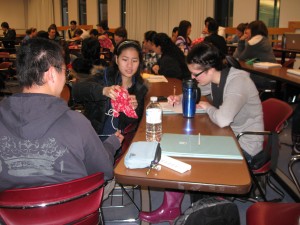What? I’m a member of the weekly reading group at the Carl Wieman Science Education Initiative . Today we discussed an article that empirically demonstrates performance gains (measured by scores on a standardized test) as a result of “Interactive Engagement” teaching methods, when compared with traditional lecture based instruction (Hake, 1998). A course was coded as using “Interactive Engagement” if the instructor used teaching methods aimed at promoting a conceptual understanding of the material via interactive activities accompanied by peer and instructor feedback through discussion. The sample was huge and diverse, involving 6542 students from 62 courses in a variety of high school, community college, and university settings. I learned today that this paper is a citation classic in physics, and one of the key drivers of physics teaching reform.
So What? The data make a compelling case for incorporating interactive techniques in the classroom by linking them to learning gains. I already use many interactive techniques in my courses, largely because of more tangential research (and because I have more fun than when I lecture — and shouldn’t learning be fun?). Research in cognitive psychology shows that deeper processing results in greater comprehension and memory; deeper processing can be enhanced by interactive techniques.
More broadly though, as I learn more about physics education, I’m surprised to see a striking connection to problems we often face in psychology education. In both disciplines, it seems, people come to intro courses with a vast amount of experience interacting with our subject matter: physical objects and people, respectively. One of the aims of intro courses in both disciplines is to disabuse people of some prior assumptions about how the (physical or psychological) world works, and replace them with discipline-specific understanding and ways of knowing. People have some intuitions about the world that need to be adjusted — and sometimes rejected entirely — in order to understand the discipline. I’m reminded here of a message from Ken Bains’ book: set up an experience in which existing paradigms don’t work, and help build these back up.
Now What? Knowing about this article makes me want to find more papers that test the hypothesis that interactive activities result in better learning — and to figure out how to measure that in my courses. I also plan to think very carefully about what kinds of activities are most useful for facilitating comprehension in my contexts (e.g., 500 students vs. 20 per course).
Since realizing the parallel between physics and psychology instruction, I’m interested in learning more about physics pedagogical research and figuring out in what ways we are conceptually similar in our teaching-related challenges (and hence what I can pull from their literature). I’m also interested in figuring out what ways we (need to) differ as disciplines when teaching the next generation of scientists and informed citizens.

 Follow
Follow
